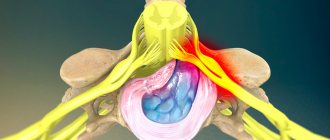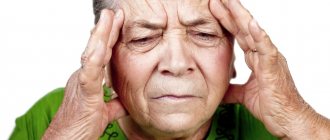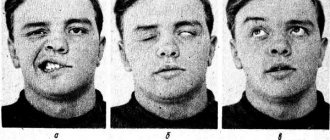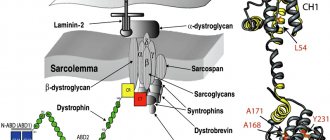If you have symptoms of thoracic neurosis, call 8(969)060-93-93 and sign up for a consultation at the Leto mental health center. Our specialists will conduct a comprehensive diagnosis, which will allow you to make the correct diagnosis and select effective treatment.
Where does chest neurosis come from?
The main cause of the disease is prolonged exposure to stress. If a person is under constant tension, his muscle tone increases. Movements become constrained. The muscles periodically spasm, which causes painful cramps. Then any sudden movement causes severe pain.
Negative symptoms persist on an ongoing basis or recur periodically. It often worsens during deep inhalation or exhalation, coughing, or when trying to perform any physical exercise. The patient's condition worsens if he has:
- Diseases of the spinal column. The problem may be associated with inflammation of the roots and joints of the spine, loss of elasticity by the intervertebral discs, etc.
- Curvature of the spine. Lordosis, kyphosis, scoliosis are diagnoses that are more often encountered by people leading a sedentary lifestyle. They slouch and make no attempt to strengthen the muscle corset of the shoulder girdle.
- History of rib fracture. The remaining deformation in the sternum area creates the prerequisites for clamps.
Among the factors complicating the course of breast neurosis:
- general hypothermia of the body;
- pneumonia;
- viral and bacterial diseases;
- pathologies of cardiovascular activity;
- oncological neoplasms in the mammary gland in women;
- diseases of the stomach and intestines.
It will not be possible to heal by eliminating only the physical component of the disease. It is imperative to stabilize the patient’s emotional background. Otherwise, a relapse of the disease will not be long in coming.
Types of pathology
Taking into account the location of the painful area, neurosis is classified into:
- left-handed;
- right-sided;
- bilateral.
The first option is found in medical practice more often than others. When faced with it, people often begin to think that their heart is “naughty.” Therefore, it is important not to delay visiting the doctor. Only differential diagnosis will make it possible to understand the characteristics of unpleasant symptoms and the nature of its origin.
With a right-sided disorder, it is easier to make a correct diagnosis - the doctor and the patient do not have associations with cardiovascular diseases. Therefore, the doctor can immediately assume muscle tension.
The bilateral form is the most painful. The pain has a girdling character and is excruciating. It is necessary to start treatment urgently.
Types of neuroses
The group of neurotic disorders can include: fears or phobias.
They represent a feeling of horror, fear of circumstances, fear of death or going crazy, sometimes this can be accompanied by panic attacks.
Obsessive-compulsive disorder is obsessive thoughts and/or actions that are stereotyped and prone to repetition, such as endless hand washing.
Reactive neurosis is a condition that occurs after suffering mental trauma and may be accompanied by intrusive images of terrible memories or partial memory loss and isolation from other people.
Hysterical neurosis is a violation of the interaction of the senses and cognitive abilities (memory, attention, thinking).
Psychosomatic disorders that are accompanied by disruption of internal organs, such as difficulty swallowing, headaches, cough, diarrhea, and frequent urination.
How it manifests itself
Signs characteristic of the disorder:
- uncontrolled muscle contractions in the chest area;
- severe pain between the ribs on the right, left or both sides at once;
- discomfort in the lower back, between the shoulder blades;
- numbness of the chest, a strange sensation of “goosebumps”.
When palpated, the pain intensifies. It also becomes more pronounced when sneezing, laughing, coughing, or making sudden movements. If the patient takes painkillers, his condition will hardly improve.
Intercostal neuralgia treatment
As mentioned above, you should not self-medicate. Here, the important factors determining the treatment as such are:
- diagnosing a problem or problems in the body;
- conducting tests for allergic reactions;
- drawing up a general or individual treatment program.
Diagnosing intercostal neuralgia before starting treatment will make it possible to identify which organs may be at risk in the event of a particular treatment method. Treatment with analgesics can cause complications in:
- pregnant women
- people with VVD (vegetative-vascular dystonia),
- prone to allergic reactions,
- people with diseases of the gastrointestinal tract (gastrointestinal tract), etc.
Consultation with a neurologist will allow you to avoid obviously unpleasant consequences, even if the patient was not previously aware of other problems in his body. Intercostal neuralgia is most often not the only problem, but arising from existing ones.
Treatment for intercostal neuralgia today has several types, so there is plenty to choose from. Each treatment method is effective in its own way, however, the time to recovery is different for everyone.
Medicines
We touched on this topic a little above, pointing out contraindications. But it is under the supervision of the attending physician that this type of treatment for intercostal neuralgia can be used.
Physiotherapy
Physiotherapy may consist of the use of magnetic therapy, phonophoresis, laser therapy. And also, you can go to sessions of therapeutic massage, physical therapy (physical therapy), and water procedures. Here you should definitely consult a doctor. This will be especially relevant for people suffering from arthritis, arthrosis, osteochondrosis, etc.
Reflexology
Reflexology is targeted pain relief by pricking a needle at the desired point on the body. When such a procedure is performed by a real specialist, it can turn out to be very effective, pleasant, and most harmless.
All these methods of treating intercostal neuralgia are far from the only recommendations that can be heard at an appointment with a neurologist. Vitamins, microelements, diagnosis of inflammation or injury, pain relief, patient behavior at home and much more. It is the combination of methods that will lead to a positive and lasting result.
Why does chest neurosis need to be treated?
The disease can have various complications. The earlier therapy is started, the lower the risk of their manifestation. Among the most common consequences of untreated breast neurosis:
- Chronic pain in the ribs and back. It deprives a person of the opportunity to lead an active lifestyle, move, play sports, dance. There is a decrease in quality of life. In some cases, advanced pathology leads to loss of ability to work.
- The range of motion in the shoulder girdle is sharply reduced. A person constantly suffers due to stiffness and muscle weakness.
- Lung diseases - bronchitis, pneumonia, obstruction - become frequent. Respiratory arrest, which can lead to death, is also possible.
- Intervertebral hernias form. This is a common complication of curvature of the spinal column, osteochondrosis. Therefore, people with thoracic neurosis who are diagnosed with these diseases should be very attentive to their health.
Intercostal neuralgia - symptoms
Unpleasant sensations of pain immediately force a modern person to look for answers on the Internet or ask friends if they have encountered such a problem. Of course, it is thanks to the symptoms that you can identify a particular disease or narrow it down to a minimum.
All symptoms of intercostal neuralgia are concentrated in the ribs . Piercing, sharp, burning or dull pain can affect the back, lower back, chest. In the latter case, there is a risk of confusing the symptoms of intercostal neuralgia with heart disease.
When walking, sitting, and even at rest, pain can make itself felt both in short impulses and in burning waves emanating from one point in the area of the ribs. This happens either due to internal inflammation of the organs, or because the nerve is pinched.
The frequency of pain also has its own characteristics. It is worth noting here that the pain can be constant, making it difficult to breathe, walk, and generally function normally. But these are quite severe cases, when there is no time to engage in self-diagnosis, self-medication, or comparison of symptoms. The best solution for such symptoms of intercostal neuralgia is to consult a specialist, namely a neurologist.
Other frequency usually causes temporary and not long-term discomfort. Various kinds of painful injections in the area of the ribs can be short-lived and disturb during the day. Moreover, such pain does not happen every day, but appears during physical activity. In this case, people rarely rush to visit a specialist, believing that the situation is not yet critical, and intercostal neuralgia is not too worrying. But this is a misconception, since an advanced form of neuralgia is much more difficult to cure and treatment will take much more time.
The middle phase, in which a person seriously thinks about finding a specialist and obvious symptoms of intercostal neuralgia - pain intensifies, becomes permanent, does not interfere with daily activities, but causes serious discomfort.
Examination and diagnosis
If there is discomfort in the chest, the patient is examined by a neurologist. Since the symptoms may be related to the stress experienced, a psychiatrist is involved in the work. The patient is interviewed and examined. Specialists:
- palpate the hypochondrium to determine trigger points;
- study the nature of the pain;
- exclude the presence of other diseases with similar symptoms;
- carry out CT or MRI of the chest, radiography, EEG and other instrumental examinations (as indicated).
Based on the diagnostics performed, a diagnosis is made.
Neuroses
Neurosis is a reversible disorder of the human mental sphere, which tends to last a long time and is caused by stress factors.
Neurosis is a functional disorder of the nervous system, but it can also be one of the manifestations of organic damage to brain tissue.
The causes of neuroses can be hidden under constant stress, experienced psychological trauma, prolonged mental and physical stress, disruption of the daily routine, poor nutrition and exhaustion. Additional factors may include: hypovitaminosis, viral diseases, such as influenza.
Neurosis carries certain features that are distinctive from other mental disorders, such as reversibility, protracted course, absence of progressive personality changes, preservation of a critical attitude towards oneself and one’s condition, and the psychogenic source of the disease.
Neurosis is a collective concept that occurs in 17% of women and 9% of men, while severe neurosis is present in 12% of people.
The history of this disease goes back to 1769, when the Scottish doctor William Cullen coined the term neurosis.
The causes of neuroses can result not only from interpersonal conflict, but also from intrapersonal conflict, i.e. disunity between one's desires and actions.
Neurosis may include another mental disorder, neurasthenia.
Neurasthenia was first described in 1869, when its main cause was established - mental trauma with excessively strenuous work activity and an irrational regime of work and rest.
Neurasthenia can occur with excessive consumption of alcohol, smoking, as well as in the presence of concomitant endocrine pathology and poor nutrition.
Neurasthenia can be divided into three groups: hypersthenic (consists of irritability, excitability, hot temper), irritable weakness (the presence of irritability, which is quickly replaced by apathy), hyposthenic neurasthenia (lethargy, apathy, depression and drowsiness).
Cost of services
| CONSULTATIONS OF SPECIALISTS | |
| Initial consultation with a psychiatrist (60 min.) | 6,000 rub. |
| Repeated consultation | 5,000 rub. |
| Consultation with a psychiatrist-narcologist (60 min.) | 5,000 rub. |
| Consultation with a psychologist | 3,500 rub. |
| Consultation with Gromova E.V. (50 minutes) | 12,000 rub. |
| PSYCHOTHERAPY | |
| Psychotherapy (session) | 7,000 rub. |
| Psychotherapy (5 sessions) | 30,000 rub. |
| Psychotherapy (10 sessions) | 60,000 rub. |
| Group psychotherapy (3-7 people) | 3,500 rub. |
| Psychotherapy session with E.V. Gromova (50 minutes) | 12,000 rub. |
This list does not contain all prices for services provided by our clinic. The full price list can be found on the “Prices” , or by calling: 8(969)060-93-93. Initial consultation is FREE!
Treatment of sternal neurosis at the Leto clinic
What procedures the therapy will include depends on the stage of the disease and the dominant symptoms. As a rule, the treatment course is aimed at:
- relieving muscle spasms;
- pain relief;
- improvement of the patient’s mental state and emotional background;
- increasing overall physical activity;
- stimulation of blood circulation.
Relieving muscle tension caused by severe nervous shock includes:
- Taking non-steroidal anti-inflammatory drugs. If they prove ineffective, a blockade is carried out. It does not eliminate the root cause of the disease, but it allows a person to be relieved of severe pain for several days.
- Steroid injections. They are used only in extreme cases, for example, if neurological symptoms are accompanied by radiculopathy.
- Physiotherapy. Good results can be obtained by ultraphonophoresis, magnetic and microwave therapy, UHF, and darsonvalization. Physiotherapy makes it possible to reduce the dose of medications used and speed up the day of recovery.
- Exercise therapy. Performing physical exercises is aimed at correcting muscle tension, improving local blood circulation, and relieving existing spasms. Particular attention is paid to stretching the back.
- Vitamin therapy. Patients are shown B vitamins and ascorbic acid. They provide support to nerve fibers and have a positive effect on the functioning of the immune system and the central nervous system.
- Massage sessions. During them, the doctor works on the chest, cervical region, and shoulder girdle. The emphasis is on relaxing cramped muscles, which ensures improvement in the client's condition.
Since the root cause of the disease is stress, observation by a psychotherapist is mandatory. The doctor helps eliminate nervous tension and overcome difficulties that arise. For this purpose, she uses individual psychotherapy sessions, cognitive-behavioral practices, trainings, relaxation sessions, etc.
We treat breast neurosis comprehensively, paying attention not only to relieving symptoms, but also to eliminating the cause and preventing complications. If you are interested in a complete recovery and no longer want to endure cramping chest pain, call - 8(969)060-93-93 . We know how to help you.
Intercostal neuralgia during pregnancy
We should also highlight such a difficult period for expectant mothers as pregnancy. It is intercostal neuralgia during pregnancy that is more than inappropriate; it bothers both the woman and affects her fetus. Moreover, it is during pregnancy that women are most often susceptible to this disease.
It is important to understand here that during pregnancy changes occur in a woman’s body. Swelling may occur, and the fetus puts additional stress on the spine, especially in the third trimester. All this can provoke pinched nerves and also cause intervertebral hernia.
If you feel pain in the heart area that is long-lasting, you should not worry that it is a heart attack. As you know, expectant mothers should not be nervous, and therefore, if you experience any unusual pain, it is better to go to a specialist, tell him your symptoms and solve the problem together with the doctor. Self-medication during pregnancy is strictly prohibited! Only a specialist neurologist will help you choose the safest methods and medications that will help get rid of intercostal neuralgia.









